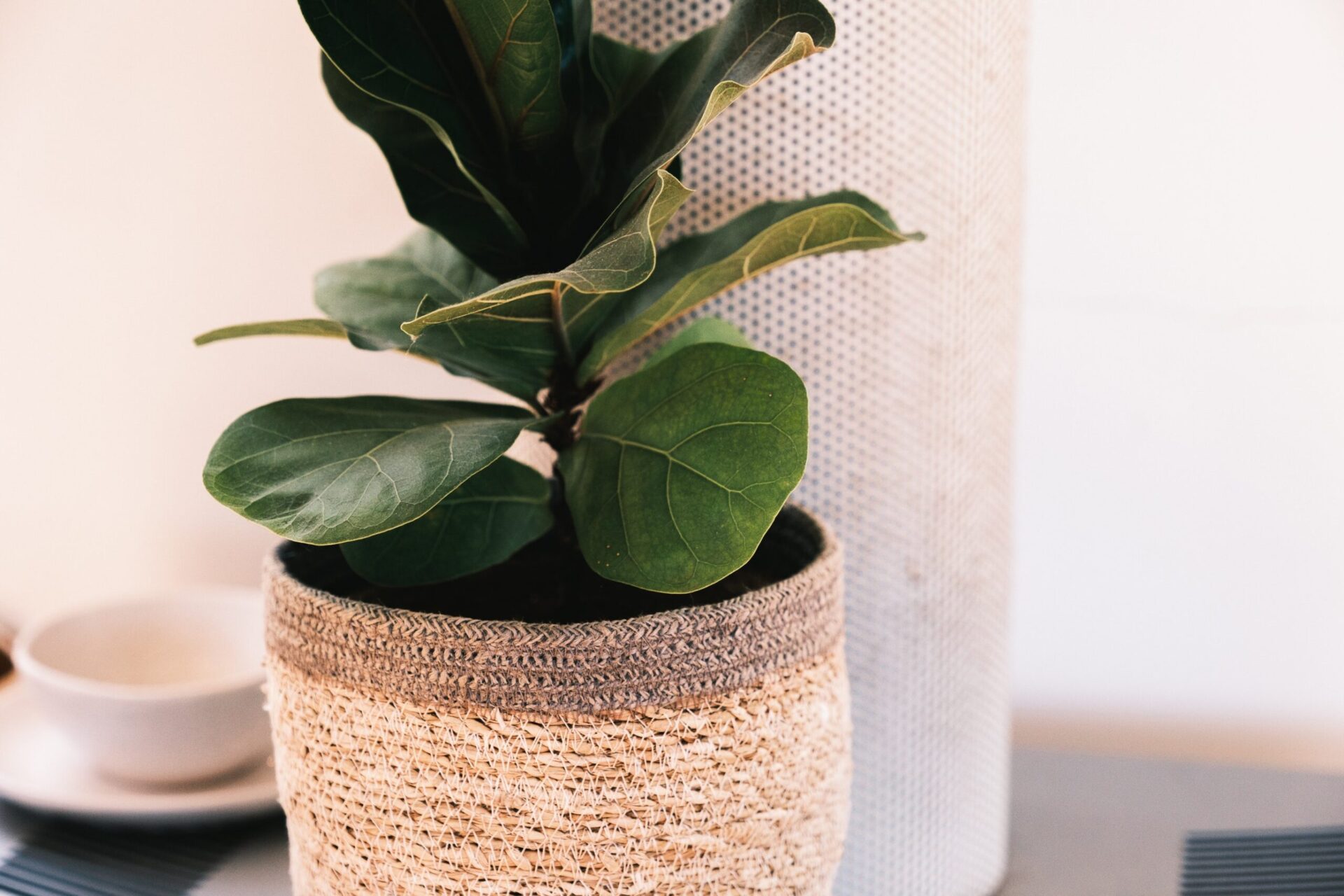You must have heard of this one as a garden lover. An every gardener’s must have, the fiddle leaf fig also called as the Ficus Lyrata makes a stunning architectural statement in any room of your home or as an office plant They are popular for their beautiful foliage, and can grow over 6 feet tall indoors, making them a bold and eye-catching addition to any home. Their shiny green leaves, unique shape, and graceful silhouette make them perfect for stunning photos. This one was proob
Fiddle-Leaf Fig Care
The Fiddle leaf figs are however, quite challenging to care for. They are therefore called finicky plants. This was one of the 1st indoor plants I purchased from a local nursery. It was a 2ft tall 3 stem fiddle leaf fig in a 14 inch nursery pot.It was hiding under a completely shaded multilayer green cover in the plant nursery.These plants are from tropical Africa, where they grow best in warm and humid conditions. Therefore this plant was already accustomed to a shady warm humid environment.
Fiddle-leaf figs are relatively low-maintenance plants, provided that you can create the right environment for their growth. These plants require bright, filtered light to grow and look their best. Direct sunlight can burn the leaves, while low light conditions will hinder their growth.
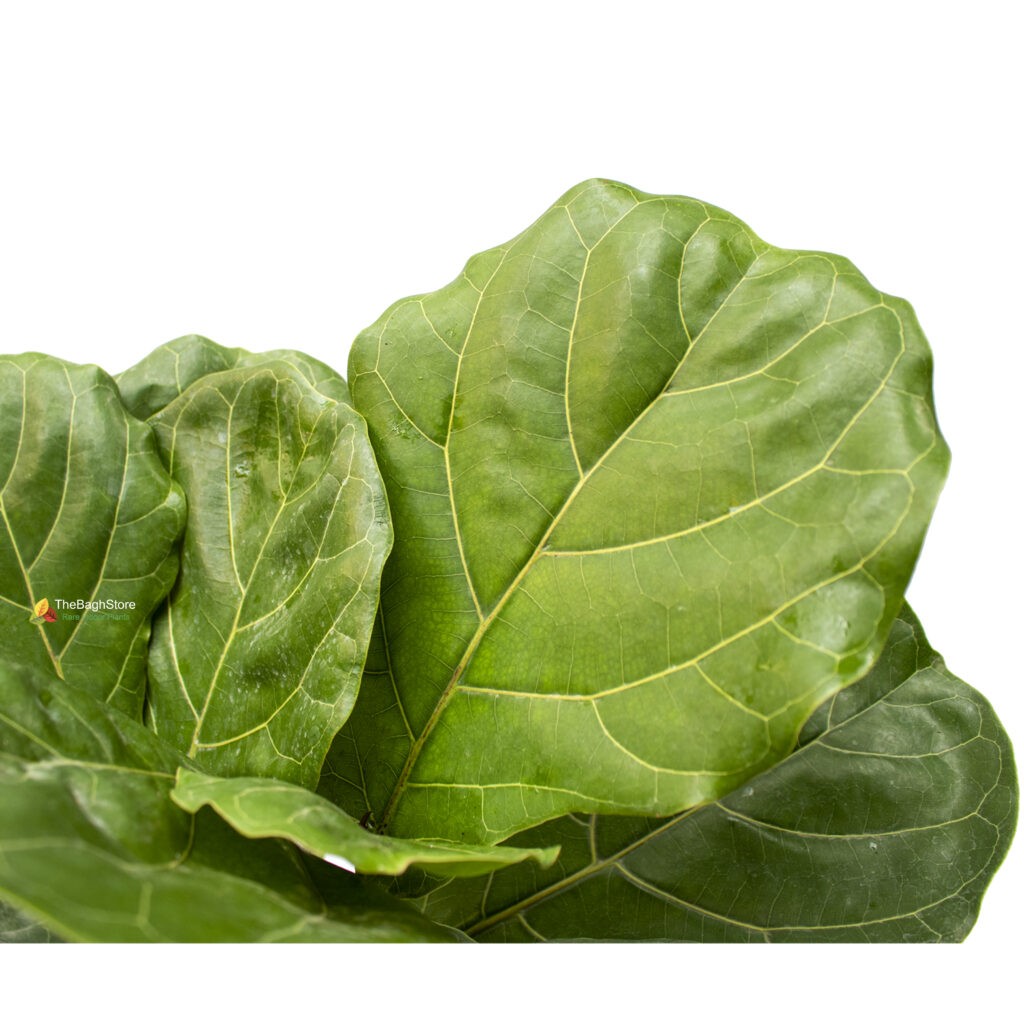
Light
Fiddle leaf figs require a ton of light to thrive. They are native to Africa, where they receive ample sunlight. In their natural habitat, these plants grow under the canopy of rainforest trees, which filter the sunlight. To replicate this environment indoors, it is recommended to place your fiddleleaf fig in a spot that receives 6-8 hours of sunlight per day. However, they can tolerate less light and even more if well taken care of. For a healthy fiddleleaf fig, it is suggested to have a total of 600 lux.
The best place for this plant is near an east-facing window, where it will receive indirect sunlight all day long, avoiding the direct sun during the hottest part of the afternoon. Too much direct sunlight can burn the leaves, causing them to turn brown and fall off. If you live in a climate with extreme temperatures, avoid placing potted plants near drafty windows or single-pane windows, as this can damage them.
Soil
Fiddle leaf figs require a well-draining soil mix with enough aeration to keep their roots healthy. The soil for a fiddle leaf fig should be nutrient-rich and have a pH level between 5.5-7.0. It should retain adequate moisture for root growth, while avoiding excessive wetness. A recommended soil mix for a fiddle leaf fig consists of one part compost, one part peat moss, one part perlite, and one part sand. This blend provides the plant with the necessary nutrients and moisture to support healthy growth and vitality.
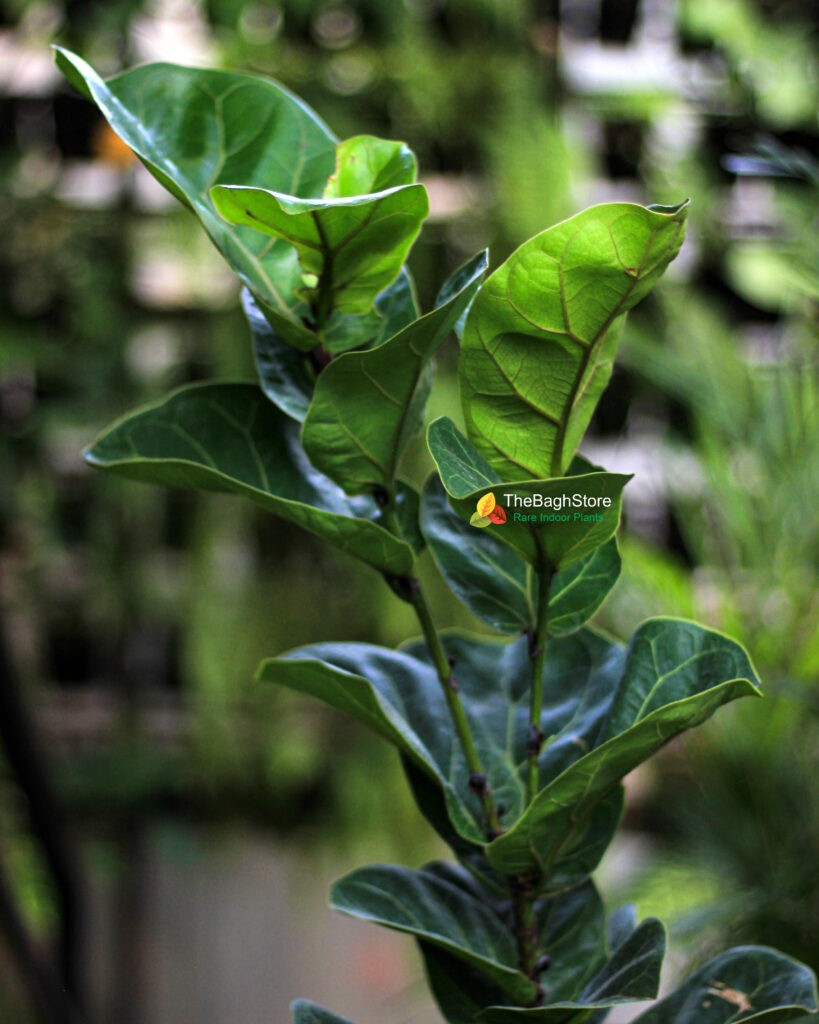
Water
Fiddle leaf figs require a consistent watering schedule to maintain their health. Overwatering or underwatering can lead to problems, so it’s important to find the right balance.
Fiddle leaf figs are native to tropical rainforests, where they experience periods of heavy rainfall followed by periods of drought. This is why it is important to water your fiddle leaf fig thoroughly and then allow the soil to dry out completely before watering again.
When the soil is too wet, the roots of your fiddle leaf fig can rot. This is because the roots need oxygen to survive, and when the soil is too wet, the roots cannot get the oxygen they need.
To water your fiddle leaf fig properly, water it deeply until water runs out of the drainage holes in the pot. Then, allow the soil to dry out completely before watering again. To determine if your plant needs water, you can check the top inch of soil by sticking your finger into the soil. If the soil is moist to the touch, do not water. If the soil is dry to the touch, water thoroughly.
The amount of time it takes for the soil to dry out will vary depending on a number of factors, including the size of the pot, the type of soil, and the humidity level in your home. As a general rule of thumb, you can expect the soil to dry out completely within 7-10 days.
Humidity
Fiddle leaf figs are tropical plants that prefer high humidity. However, they can tolerate moderate to low humidity, especially if they are provided with enough water. The ideal humidity level for a fiddleleaf fig is between 40% and 60%.
If you live in a dry climate, you may need to increase the humidity around your fiddleleaf fig. You can do this by misting the plant regularly, placing it on a pebble tray filled with water, or using a humidifier.
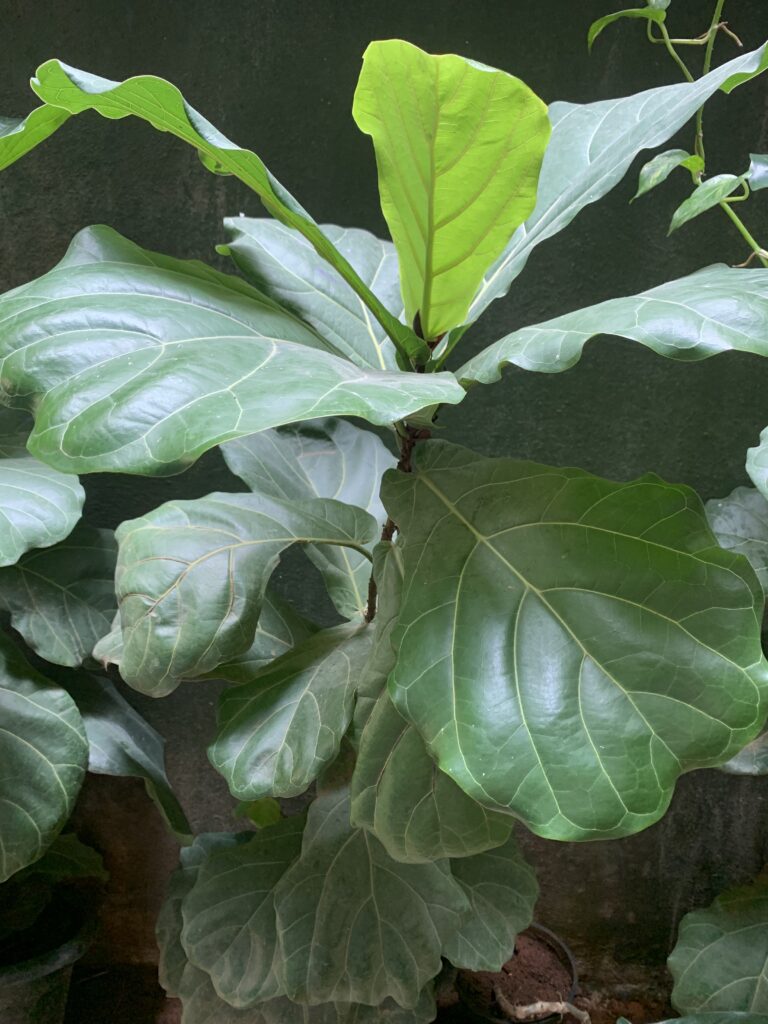
Fertilizer
Fiddle leaf figs are relatively low-maintenance plants, but they do require some fertilization to thrive. The best fertilizer for a fiddleleaf fig is a balanced fertilizer with an NPK ratio of 3-1-2. This means that the fertilizer should have three times more nitrogen than phosphorus and potassium.
You can fertilize your fiddleleaf fig every 2-4 weeks during the growing season, which is spring and summer. It is better to under-fertilize than to over-fertilize, as over-fertilization can damage the plant. During the fall and winter, you can reduce the frequency of fertilization to once a month or even less often. Fiddleleaf figs are relatively dormant during the winter, so they do not need as much fertilizer.
Pruning and propagating
One of the ways to keep your fiddle leaf fig happy and healthy is to prune it regularly. Pruning helps to remove any dead or damaged leaves, as well as any overgrown or crossing branches. This will improve the appearance and shape of your plant, as well as encourage new growth.
To prune your fiddle leaf fig, use a sharp pair of scissors or pruning shears and cut just above a leaf node (where a leaf attaches to the stem). Make sure to disinfect your tools before and after each cut to prevent the spread of diseases. You can prune your fiddle leaf fig at any time of the year, but it is best to do it in spring or summer when the plant is actively growing.
Another benefit of pruning your fiddle leaf fig is that you can use the cuttings to propagate new plants. Propagating is a great way to multiply your collection or share your plants with friends and family. There are two methods of propagating fiddle leaf figs: water propagation and soil propagation.
Water propagation involves placing the cuttings in a jar or vase of water and waiting for roots to develop. This can take anywhere from a few weeks to a few months, depending on the temperature and light conditions. You should change the water every week and add some liquid fertilizer every month to boost the growth of the roots. Once the roots are about an inch long, you can transfer the cuttings to a pot with well-draining soil.
Soil propagation involves planting the cuttings directly into a pot with moist soil. You should use a potting mix that is suitable for fiddle leaf figs, such as one that contains peat moss, perlite, and bark. You should also use a rooting hormone powder or gel to stimulate the formation of roots. Dip the cut end of the cutting into the rooting hormone and then insert it into the soil. You should water the soil lightly and cover the pot with a plastic bag or dome to create a humid environment. You should check on the cuttings every week and mist them occasionally to keep them moist. You should see new leaves emerging in about a month or two.
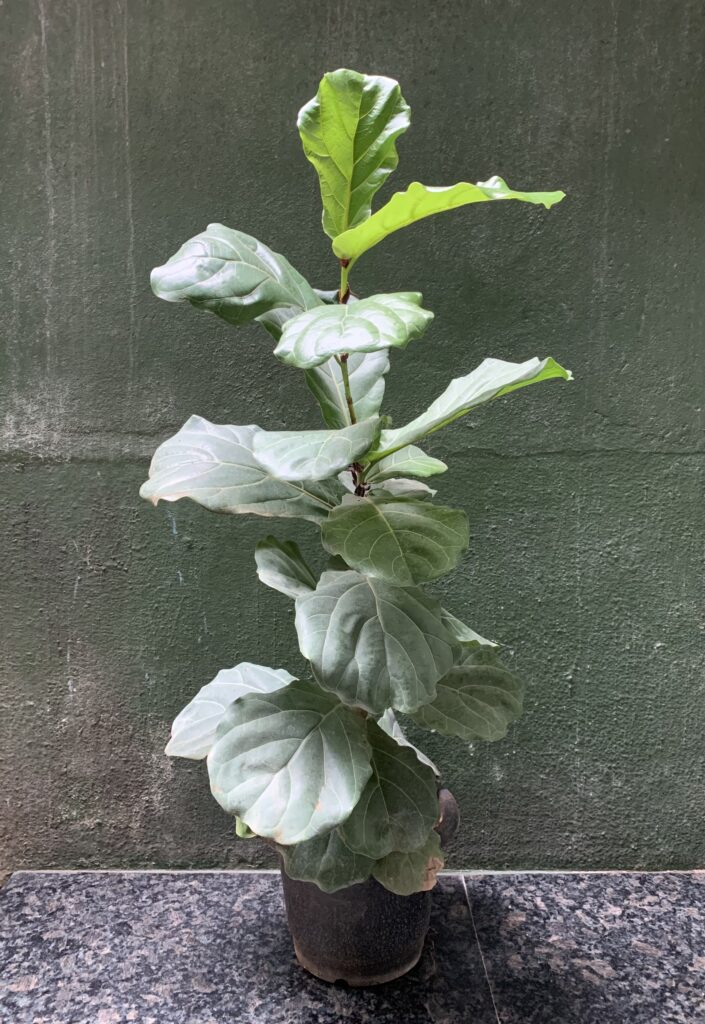
Potting and Repotting
Another important aspect of caring for your fiddle leaf fig is choosing the right pot and soil for it. Fiddle leaf figs prefer pots that are slightly larger than their root ball, but not too big. A pot that is too small will restrict the growth of the roots and cause root rot. A pot that is too big will hold too much water and cause root rot as well.
You should repot your fiddle leaf fig every year when it is young and every two or three years when it is mature. The best time to repot your fiddle leaf fig is in spring or summer when the plant is actively growing. To repot your fiddle leaf fig, gently remove it from its current pot and shake off any excess soil from its roots. Inspect the roots for any signs of damage or disease and trim off any unhealthy parts. Then place the plant in its new pot and fill it with fresh soil, leaving about an inch of space from the top of the pot. Water the soil thoroughly and let it drain completely.
If your fiddle leaf fig is mature and does not need repotting, you can still refresh its soil by top-dressing it every spring. Top-dressing involves removing the top few inches of soil from the pot and replacing it with new soil. This will help to replenish the nutrients in the soil and improve its drainage.
Pests and Diseases
Fiddle leaf figs are generally resistant to pests and diseases, but they can still be affected by some common problems. Some of the pests that can infest your fiddle leaf fig are spider mites, scale insects, mealybugs, aphids, thrips, and whiteflies. These pests can suck out the sap from your plant’s leaves and stems, causing them to wilt, yellow, curl, or drop off.
To prevent pest infestations, you should inspect your fiddle leaf fig regularly for any signs of damage or webbing on its leaves or stems. You should also keep your plant away from other infected plants and isolate it if you notice any pests on it. You can treat pest infestations by wiping the affected parts of your plant with a cotton swab dipped in rubbing alcohol or spraying it with a solution of water and mild soap. You can also use a commercial insecticidal spray or oil that is safe for fiddle leaf figs, following the instructions on the label.
Some of the diseases that can affect your fiddle leaf fig are bacterial or fungal infections, such as leaf spot, root rot, stem rot, and anthracnose. These diseases can cause your plant’s leaves to develop brown spots, black spots, or patches of gray mold. They can also cause your plant’s roots or stems to become soft, mushy, or discolored.
To prevent disease infections, you should keep your plant in a well-ventilated area and avoid overwatering or underwatering it. You should also avoid splashing water on its leaves or stems and use clean tools when pruning or propagating it. You can treat disease infections by removing any affected parts of your plant and applying a fungicide or bactericide that is safe for fiddle leaf figs, following the instructions on the label.
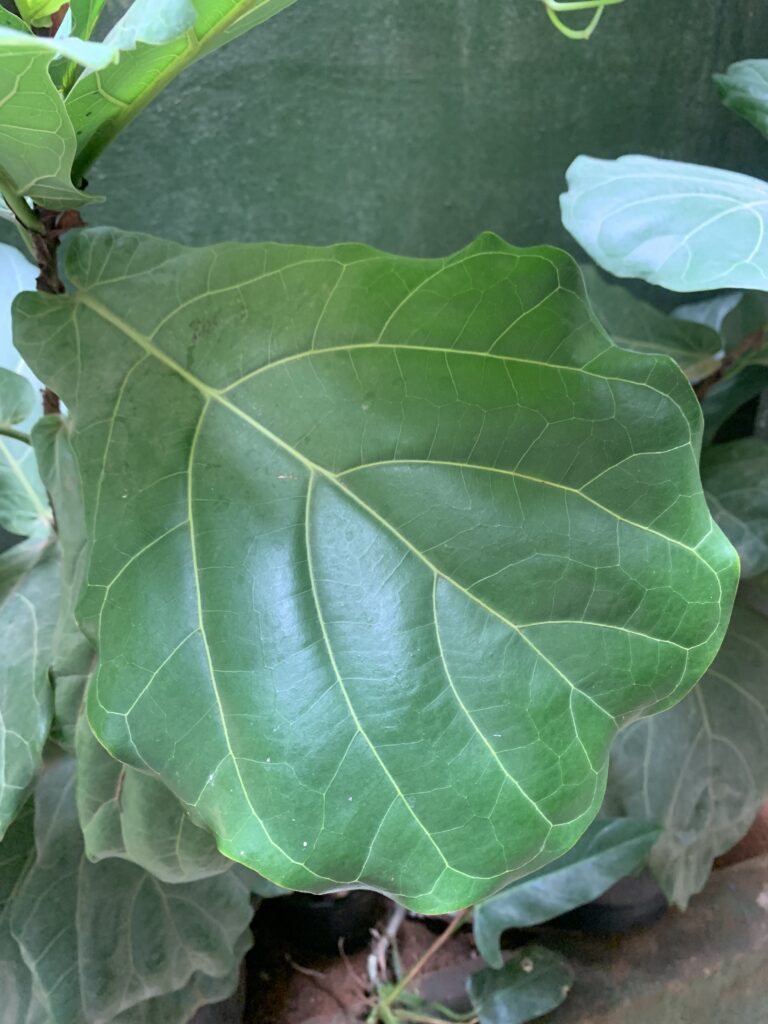
Common problems
Fiddle leaf figs can be sensitive to their environment and watering schedule, and they can show signs of stress or unhappiness if they are not happy with their conditions. Some of the common problems that fiddle leaf fig owners face are:
Bleached leaves
This can be caused by too much direct sunlight, which can scorch your plant’s leaves and make them lose their color. To prevent this, you should place your fiddle leaf fig in a bright spot that receives indirect or filtered light. You should also avoid placing your plant near windows that face south or west, as these can receive too much sun during the day.
Brown spots on leaves
This can be caused by root rot, extreme temperature swings, or overwatering. Root rot is a condition where your plant’s roots become infected by a fungus or bacteria and start to decay. This can affect the health of your plant and cause its leaves to develop brown spots or edges. Extreme temperature swings can also stress your plant and cause its leaves to turn brown. Overwatering can also cause your plant’s roots to rot and its leaves to turn brown. To prevent this, you should check your plant’s soil for moisture before watering it and only water it when the top inch of soil feels dry. You should also keep your plant in a stable temperature range of 60 to 85 degrees Fahrenheit and avoid exposing it to drafts or heaters.
Yellowing leaves
This can be caused by a bacterial infection, such as Xanthomonas campestris pv. Fici, which can enter your plant through wounds or cuts on its leaves or stems. This infection can cause your plant’s leaves to turn yellow and fall off. To prevent this, you should avoid injuring your plant when pruning or propagating it and use clean tools when doing so. You should also keep your plant in a well-ventilated area and avoid splashing water on its leaves or stems. You can treat this infection by removing any affected parts of your plant and applying a bactericide that is safe for fiddle leaf figs, following the instructions on the label.
Dropping leaves
This can be caused by overwatering, underwatering, or extreme temperature changes. Overwatering can cause your plant’s roots to rot and its leaves to drop off. Underwatering can cause your plant’s soil to dry out and its leaves to wilt and fall off. Extreme temperature changes can also stress your plant and cause its leaves to drop off. To prevent this, you should water your plant only when the top inch of soil feels dry and avoid letting it sit in waterlogged soil. You should also keep your plant in a stable temperature range of 60 to 85 degrees Fahrenheit and avoid exposing it to drafts or heaters.
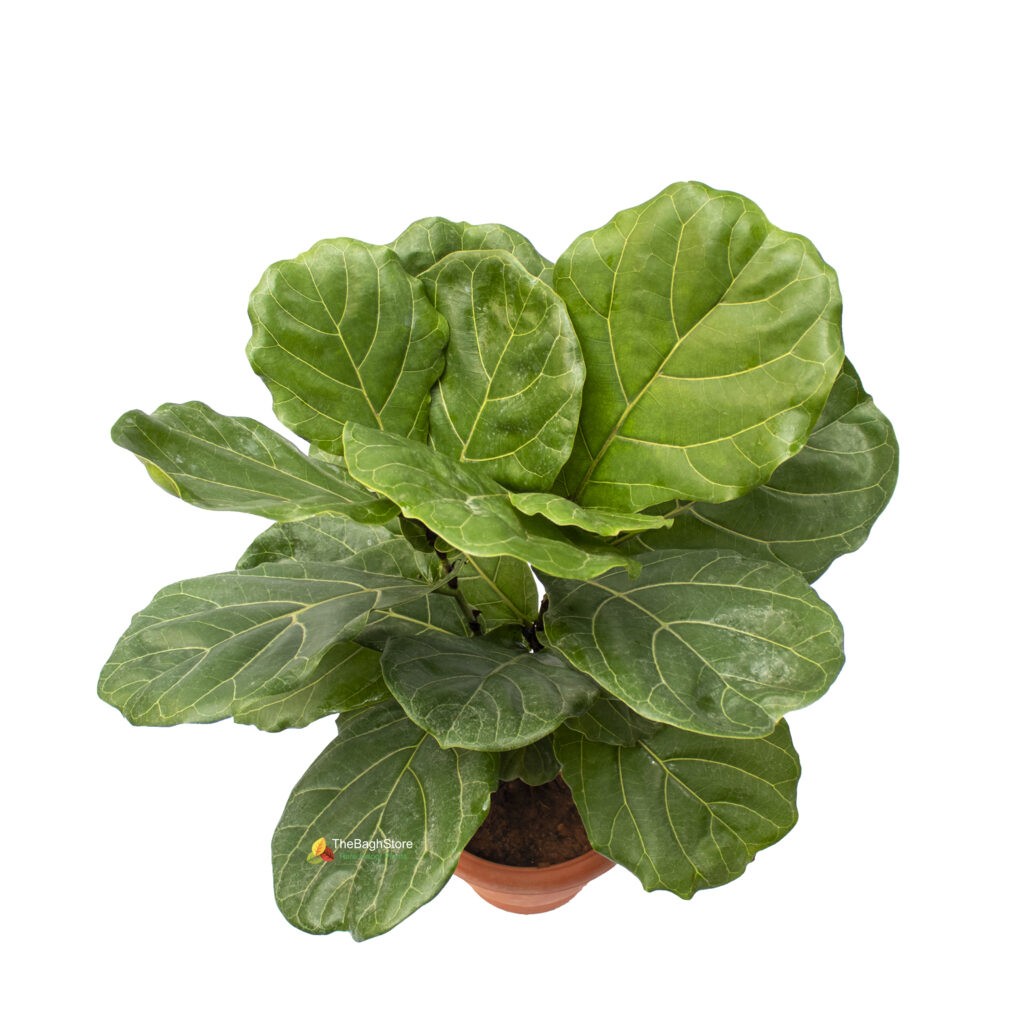
FAQ
Are fiddle leaf figs easy to care for?
Fiddle leaf figs are not the easiest plants to care for, as they have specific requirements for light, water, temperature, and humidity. They can also be prone to pests and diseases, as well as environmental stress. However, with proper care and attention, fiddle leaf figs can be rewarding plants that can grow into beautiful specimens.
How to propagate fiddle leaf fig?
Fiddle leaf figs can be propagated from cuttings using either water propagation or soil propagation methods. Water propagation involves placing the cuttings in a jar or vase of water and waiting for roots to develop. Soil propagation involves planting the cuttings directly into a pot with moist soil.
How fast do fiddle leaf figs grow?
Fiddle leaf figs grow at a moderate rate of about one foot per year under optimal conditions. However, their growth rate can vary depending on their age, size, health, light, water, temperature, humidity, fertilizer, and pruning tend to grow faster than those that receive less.
How much light does a fiddle leaf fig need?
Fiddle leaf figs need bright, filtered light to thrive. They can tolerate some direct sunlight in the morning or evening, but they should be protected from harsh midday sun that can burn their leaves. You can place your fiddle leaf fig near a window that faces east or west, or use a sheer curtain to diffuse the light. You should also rotate your plant every few weeks to ensure even growth and prevent leaning.
How to get fiddle leaf fig to grow new leaves?
Fiddle leaf figs can grow new leaves if they are given the right conditions and care. Some of the factors that can encourage new leaf growth are pruning which can stimulate new growth by removing any dead or damaged leaves, as well as any overgrown or crossing branches. This will also improve the appearance and shape of your plant, as well as encourage branching.
How much water do fiddle leaf figs need?
Fiddle leaf figs like a moderate amount of moisture in the soil, but they do not like to be overwatered or underwatered. Overwatering can cause root rot and leaf drop, while underwatering can cause wilting and browning of the leaves.
How to care for a fig tree indoors?
Fig trees are another type of ficus plants that can be grown indoors as houseplants. They have edible fruits that can range in color from green to purple, depending on the variety. Fig trees have similar requirements as fiddle leaf figs for light, water, temperature, and humidity. However, they may need more frequent watering and fertilizing than fiddle leaf figs, especially when they are fruiting. You should also prune your fig tree regularly to maintain its shape and size, as well as to promote fruit production.
How to make fiddle leaf fig grow taller?
Fiddle leaf figs can grow taller if they are given enough space and support to grow. You should choose a pot that is slightly larger than its root ball, but not too big. You should also use a stake or trellis to support its stem and prevent it from bending or breaking. You should tie your plant loosely to the stake or trellis with soft ties or clips, allowing some room for movement and growth. You should also prune your plant occasionally to remove any lower leaves or branches that may hinder its upward growth.
How to grow branches on fiddle leaf fig?
Fiddle leaf figs can grow branches if they are pruned correctly and given enough light and nutrients. To prune your fiddle leaf fig for branching, you should cut just above a leaf node (where a leaf attaches to the stem) at an angle of about 45 degrees. This will encourage new buds to form at the node and grow into branches. You should also make sure that your plant receives enough bright, filtered light and high-nitrogen fertilizer to support its growth.
Will a fiddle-leaf fig grow fruit?
Fiddle-leaf figs are unlikely to grow fruit indoors, as they need special conditions and pollination to do so. Fiddle-leaf figs are dioecious plants, which means they have separate male and female flowers on different plants. They also need a specific type of wasp, called the fig wasp, to pollinate their flowers. These wasps are native to the tropical rainforests of western Africa, where fiddle-leaf figs originate from. Therefore, it is very rare for fiddle-leaf figs to produce fruits indoors, unless they are artificially pollinated or grown in a greenhouse with fig wasps.

